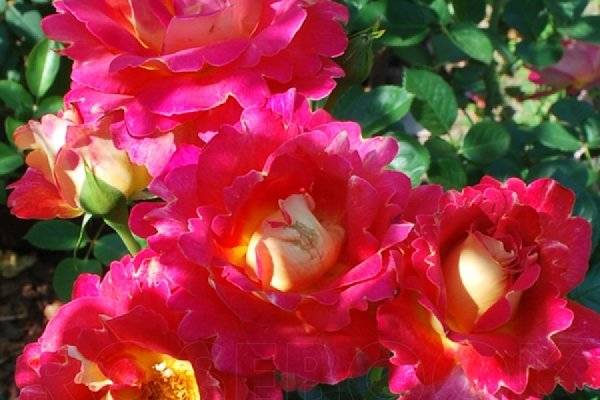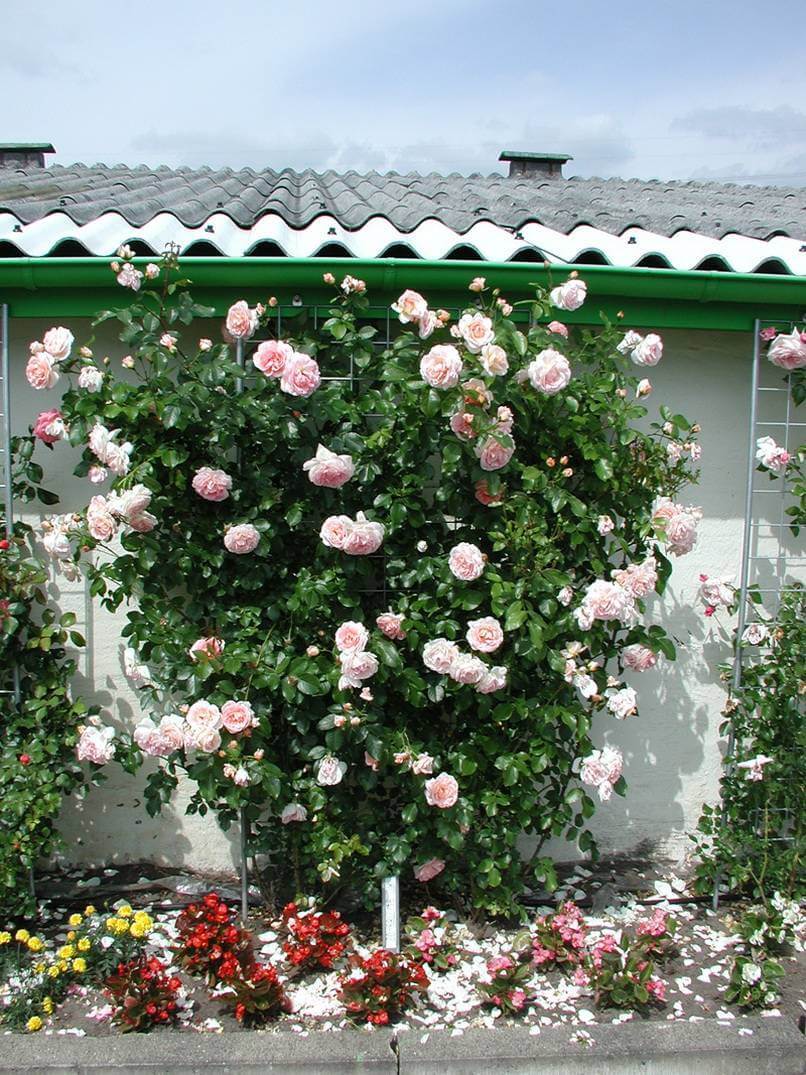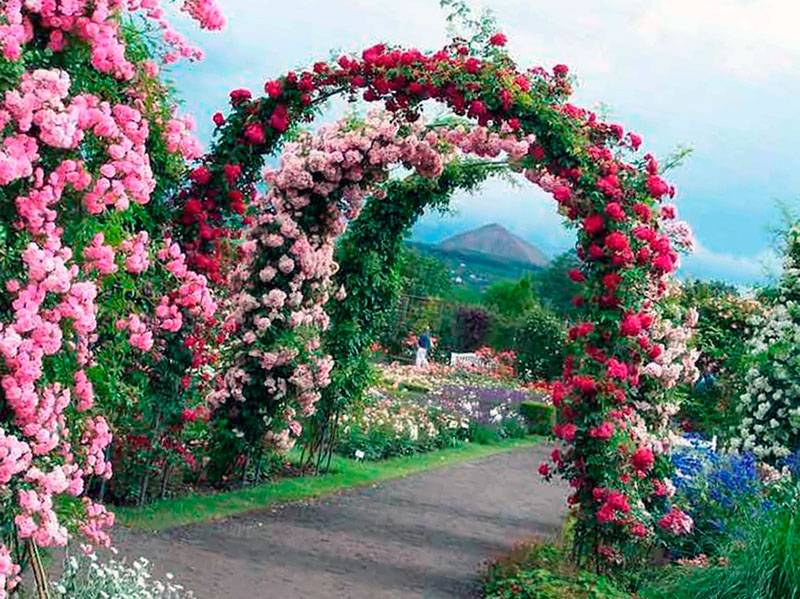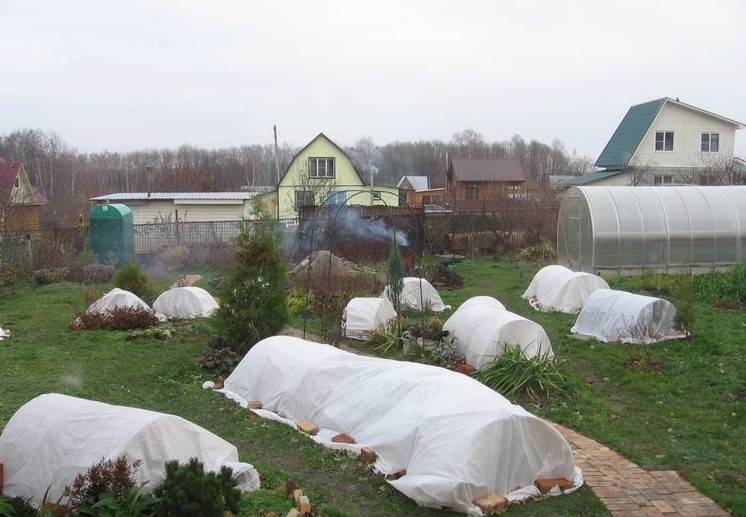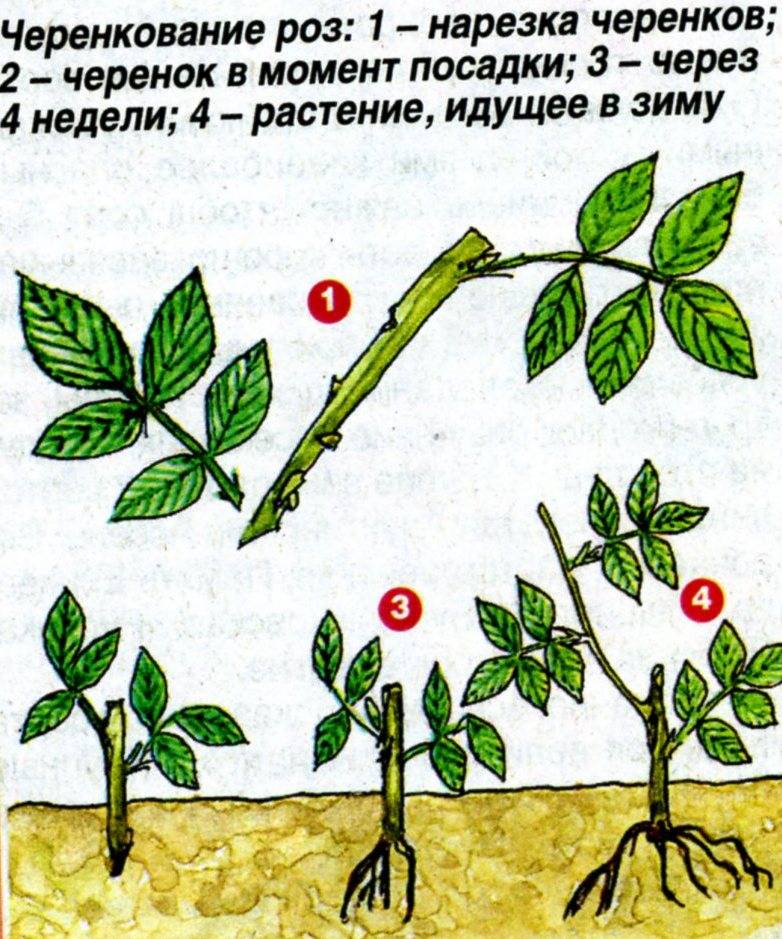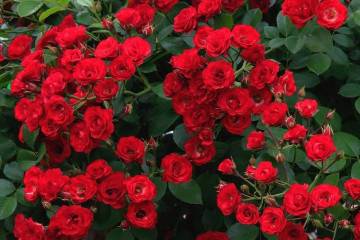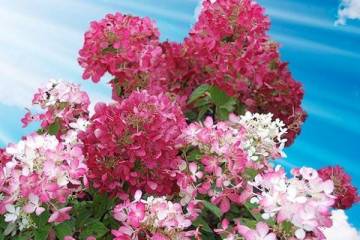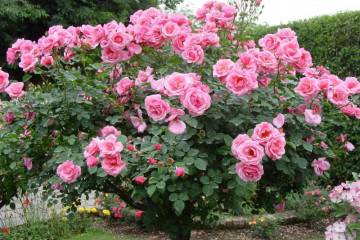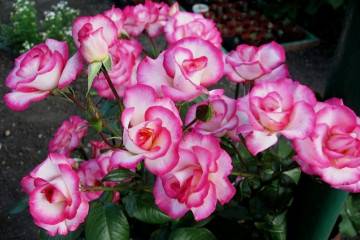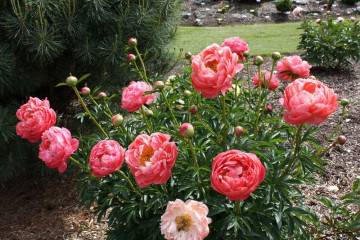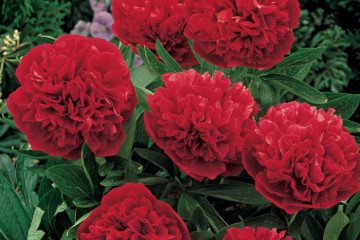Rose Harlequin (Arlequin) - features of the variety
Content:
Rose Harlequin (Arlequin or Harlequin, Harlekin) is a hybrid climbing variety that can become a special decoration of the garden. Such roses easily entwine arches, artificially created decor items in the garden. The rose got its name from the stage name of circus artists who skillfully change their appearance in the arena. After all, her flowers also have the ability to change color.
Rose Harlequin: description
Rose Harlequin is a plant with large flowers, collected in a brush of up to 5 pcs. The flowers bend slightly downward under their weight. The foliage of the shrub is dark green, bright, shiny. Flower petals are creamy white or pale pink with crimson edging, less often bright red. Flowers are densely double, up to 7 cm in diameter, very fragrant. The thorns are small. The plant reaches a height of up to 3 m.
The duration of the flowering of the Harlequin rose is at least 30 days. The rose is resistant to frost and fungal diseases. It is used for vertical gardening and garden decoration.
The Harlequin rose was bred by French breeders of the Meilland company in 1986. It has alternative names, one of which is MEIzourayor rose.
Advantages and disadvantages
Rose Harlekin, despite its young age, has gained wide popularity among gardeners and landscape designers. All thanks to its unusually beautiful flowering and unpretentious appearance.
The main advantages include the following qualities:
- frost resistance. The plant tolerates temperatures down to -40 degrees well;
- resistance to pest attacks and diseases;
- large double flowers that change color as the petals bloom;
- pronounced pleasant aroma;
- lush bloom, repeated throughout the season.
Among the shortcomings, the only and rather conditional one was noted - the rapid growth of the bush, which makes it necessary to carry out formative pruning twice a season.
Use in landscape design
Due to its decorative qualities, the hybrid received a second name among landscape designers - the Harlequin decor rose. It is widely used for vertical landscaping. Due to its lush and long flowering, it is an adornment of any composition.
Growing a flower in the open field
For growing a hybrid, only seedlings are used. The best option is planting material grown in the home region. It is better to buy seedlings just before planting. In some cases, it is permissible to store the seedling in a shipping container with soil for 3 months.
The decor should be planted in the open ground when the air temperature reaches + 20-22 degrees, approximately in April-May.
Favorable for the Harlequin Myam Decor rose are well-ventilated areas, sunny and slightly elevated. The plant is not suitable for places where groundwater stagnation is possible. Does not like hybrid rose and places located near water bodies.
How to prepare the soil and flower for planting
Preparing a flower for planting consists in moisturizing its root system. As for the soil, the Harlequin rose needs well-drained and fertile ones. If the soil is too dense, it is mixed with sand in equal proportions.
Planting procedure step by step:
- The soil of the planting container with the seedling must be moistened abundantly.
- Dig holes in the marked places. Their depth should be twice or three times the length of the root system.
- Pour a drainage layer on the bottom of the holes. It can be broken brick, expanded clay, small fragments of ceramics, dry needles.
- Remove the rose from the shipping container, plant it in the holes, cover it with a mixture of sand and earth, and compact.
- Water and mulch the planting holes.
Plant care
Fulfilling the recommendations of experts for the care of a climbing rose Decor, any gardener will be able to achieve a quick and lush flowering. Moreover, the appearance of the first flowers will not be long in coming, if everything is done correctly.
Watering rules
Park Rose Decor Harlequin is a plant with a root system located close to the surface layers of the soil. Therefore, it is important not to allow the soil to dry out in the root zone. This can lead to dehydration of the roots, which will lead to the death of the shrub.
Excessive waterlogging is also painfully tolerated by the plant. In order for the Harlekin rose to feel good, it must be watered 2-3 times a week. Morning watering is optimal. The amount of water should be at least 1 bucket for each bush. So that the earth does not dry out, it is necessary to mulch after watering. The best material for this is peat.
Top dressing and soil quality
Arlequin rose needs to be fed periodically. Complex mineral fertilizers are used for feeding. Unlike most ornamental crops, the Harlequin climbing rose needs additional feeding in the fall after flowering. This helps the plant adapt to the coming winter.
Rejuvenating pruning should be done annually at the onset of spring. Park rose Harlequin decor needs to remove weakened and old shoots. If you need to carry out cardinal rejuvenation, the branches are cut to 2-3 buds.
During the flowering period of the climbing rose Harlequin, moderate formative pruning can be carried out to maintain the shape provided for by the composition. You can not get carried away with pruning and carry it out unnecessarily. This can lead to poor flowering.
To transplant the plant, the bush is cut to a height of 40-50 cm. The “resettlement” of the bushes is done in the spring, choosing a cloudy day for this. It is important to keep the root zone constantly hydrated after transplanting.
Features of wintering a flower
There is no need to rush to cover the rose for the winter. The shelter is carried out with the establishment of subzero temperatures around November-December. Before this, the root area is mulched, and the long, tall branches are bent to the ground and fixed with a wire hairpin.
For the covering material, a thick wire frame is prepared. Burlap is used as a shelter - it does not interfere with air exchange. The edges of the burlap are pressed to the ground and fixed with materials at hand.
Blooming rose
Rose Decor is one of the most magnificent garden decorations. Knowing the characteristics of the plant and providing it with proper care, you can achieve lush and long-lasting flowering.
Gardeners who planted a seedling in the spring are often puzzled that the climbing rose does not bloom. This is normal. In the year of planting, the culture gains strength, takes root and adapts to new conditions. Therefore, you should not wait in the first season of flowering. But in subsequent years, the plant will delight with its lush color from July to the end of August. In warm autumn, the rose can bloom until the end of September. The dormant period begins in November-December and lasts until warm spring days.
Care during and after flowering
During the flowering period, the Harlequin rose requires abundant watering. The main criterion for assessing the correctness of the irrigation regime is the condition of the soil in the root area. It should be moisturized.
The bush blooms continuously in summer, while old inflorescences give way to new ones. To provide a high decorative effect of the plant, you need to cut off the wilted buds.
What to do if it does not bloom, possible reasons
The reasons why flowering does not occur may be as follows:
- less than a year has passed since landing;
- accumulation of excess moisture in the roots, poor drainage;
- lack of dressing;
- the site is poorly ventilated;
- incorrect cropping.
Flower propagation
The climbing rose of the Harlequin variety belongs to a hybrid species, therefore it propagates only by cuttings. In order for the seedling to grow stronger before the onset of frost, cuttings are cut during the flowering period. The most suitable time is June-July.
Branches with a diameter of at least 1 cm are suitable for cutting cuttings. The lower cut is made at an acute angle, and the upper cut at a right angle. The upper cut is treated with a solution of potassium permanganate and covered with garden varnish or wax.
Thorns and leaves are removed from the handle. The lower cut is thoroughly cleaned and placed in a root former solution. The stalk prepared in this way is deepened into the soil mixture by 15 cm and covered with a plastic bottle.
Diseases, pests and ways to control them
Despite the fact that the Harlequin variety is considered resistant to the development of diseases and attack by pests, in rare cases, gardeners note the occurrence of problems.
The rose can be affected by gray mold, rust or powdery mildew due to excessive moisture in the soil or high humidity. In such cases, it is necessary to reduce watering and treat the plant with special biological products.
From pests on rose bushes, leafhoppers, spider mites, aphids can settle. A soap solution or an infusion of wormwood will help get rid of them. Insecticide treatment is also recommended.
Beautiful buds that change color as the flower unfolds from cream to crimson, bright dense foliage will become the highlight of any landscape composition. The flowering plant exudes a subtle delicate aroma. All these qualities have made the Harlequin rose popular among flower growers.
